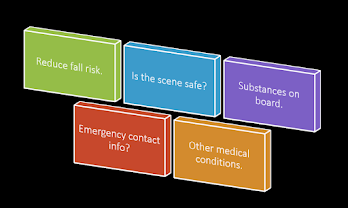- An overdose is when a toxic amount of a drug, or combination of drugs overwhelms the body. Opioid overdoses happen when there are so many opioids or a combination of opioids and other drugs in the body that the victim is not responsive to stimulation and/or breathing is inadequate.
- Opioids fit into specific receptors that also affect the drive to breathe. If someone can not breathe or is not breathing enough, the oxygen levels in the blood decrease, and the lips and fingers turn blue- this is called cyanosis. This oxygen starvation eventually stops other vital organs like the heart, and then the brain. This leads to unconsciousness, coma, and then death.
Brain damage starts to occur after 3-5 minutes without oxygen, followed by death. Fortunately, this process is rarely instantaneous; people slowly stop breathing which usually happens minutes to hours after the drug is used. While people have been “found dead with a needle in their arm,” more often there is time to intervene between when an overdose starts and before a victim dies.
- Heroin, prescription opioids, and other downers such as alcohol and benzodiazepines are a particularly dangerous combo since they all affect the body’s central nervous system, which slows breathing, blood pressure, and heart rate, and in turn, reduces body temperature.
- In a stimulant overdose, drugs like speed, cocaine, and ecstasy raise the heart rate, blood pressure, and body temperature, and speed up breathing. This can lead to a seizure, stroke, heart attack, or death.
How to help someone who is overdosing:
- Call 911 immediately.
- If the person is unconscious, roll them onto their side to prevent choking.
- Check their breathing and pulse. If they are not breathing, give CPR.
- If you have Narcan, administer it according to the package instructions.
Stay with the person until help arrives.
References
Opioid Overdose Basics - Harm Reduction Coalition. (2019). Harmreduction.org. https://harmreduction.org/issues/overdose-prevention/overview/overdose-basics/



























